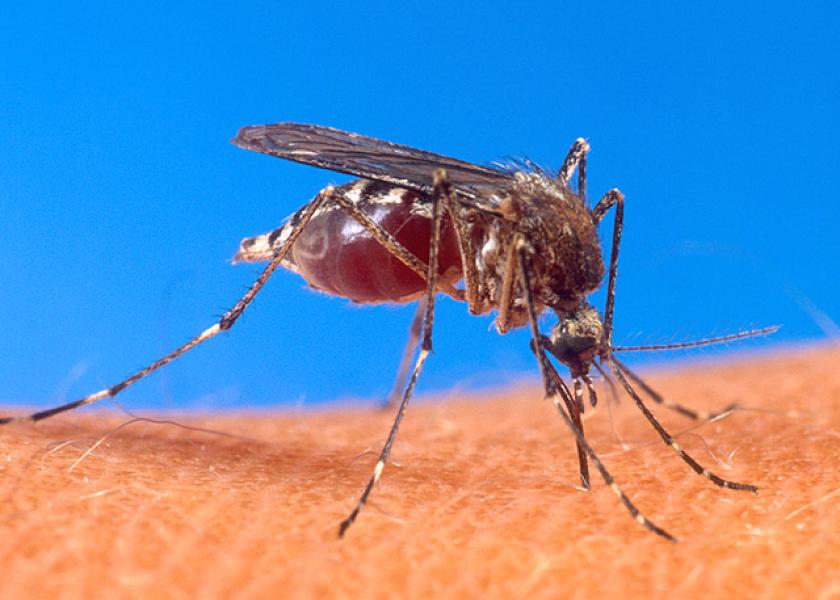EEE: Not Just a Horse Disease

Eastern equine encephalitis (EEE), a mosquito-borne virus, most years presents a serious disease challenge to horses and other equines during the summer and fall months. But while the virus can affect other animals and humans, those cases typically are rare. This year, possibly due to wet conditions favoring populations of mosquito vectors, cases of EEE in humans have run higher than usual, according to figures from the U.S. Centers for Disease Control and Prevention (CDC).
As of November 19, 2019, the CDC has received reports of 36 confirmed human cases of EEE this year, including 14 deaths. On average, the CDC reports seven human cases in the United States annually. Recently, a Michigan farmer became that state’s sixth EEE fatality for 2019. EEE cases are most common in the Eastern U.S., and this year’s human cases have occurred in Connecticut, Indiana, Massachusetts, Michigan, North Carolina, New Jersey, Rhode Island, and Tennessee.
According to the CDC, only about 4 to 5% of human EEEV infections result in clinical cases of EEE, and exposure to the virus appears to confer life-long immunity against re-infection.
Also this fall, wildlife officials in Minnesota have confirmed EEE in three ruffed grouse that hunters submitted for testing. Birds are known carriers of the virus, but this is the first known case of clinical EEE in wild animals in Minnesota. Tests in other wildlife, including wolves and moose in Minnesota, have indicated exposure to the EEE virus, but no clinical disease has emerged in those species.
CDC stresses that direct exposure to infected animals does not appear to present any risk of EEE infection, which requires transmission through mosquito vectors. The Culiseta melanura mosquito species apparently transmits the virus between avian hosts, while mosquitos from the Aedes, Coquillettidia, and Culex species sometimes transmit the virus from birds to mammals such as horses, and more rarely, humans.
Read more about EEE from the CDC.
For more on vector-borne diseases, see these articles from BovineVetOnline:
Anaplasmosis: Not Just the South, Not Just from Ticks
Breaking the Lyme Disease Cycle
Control External Parasites, Prevent Disease







